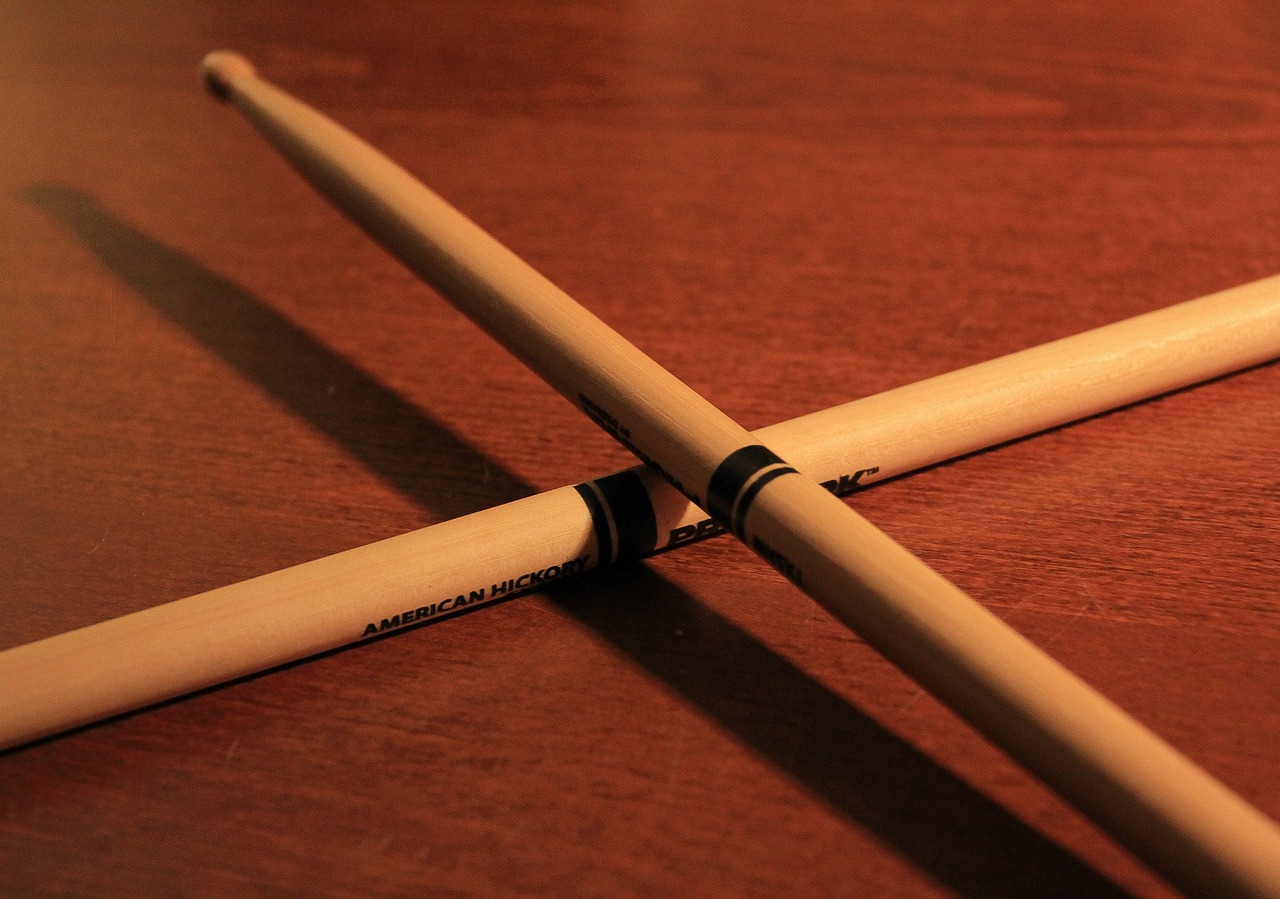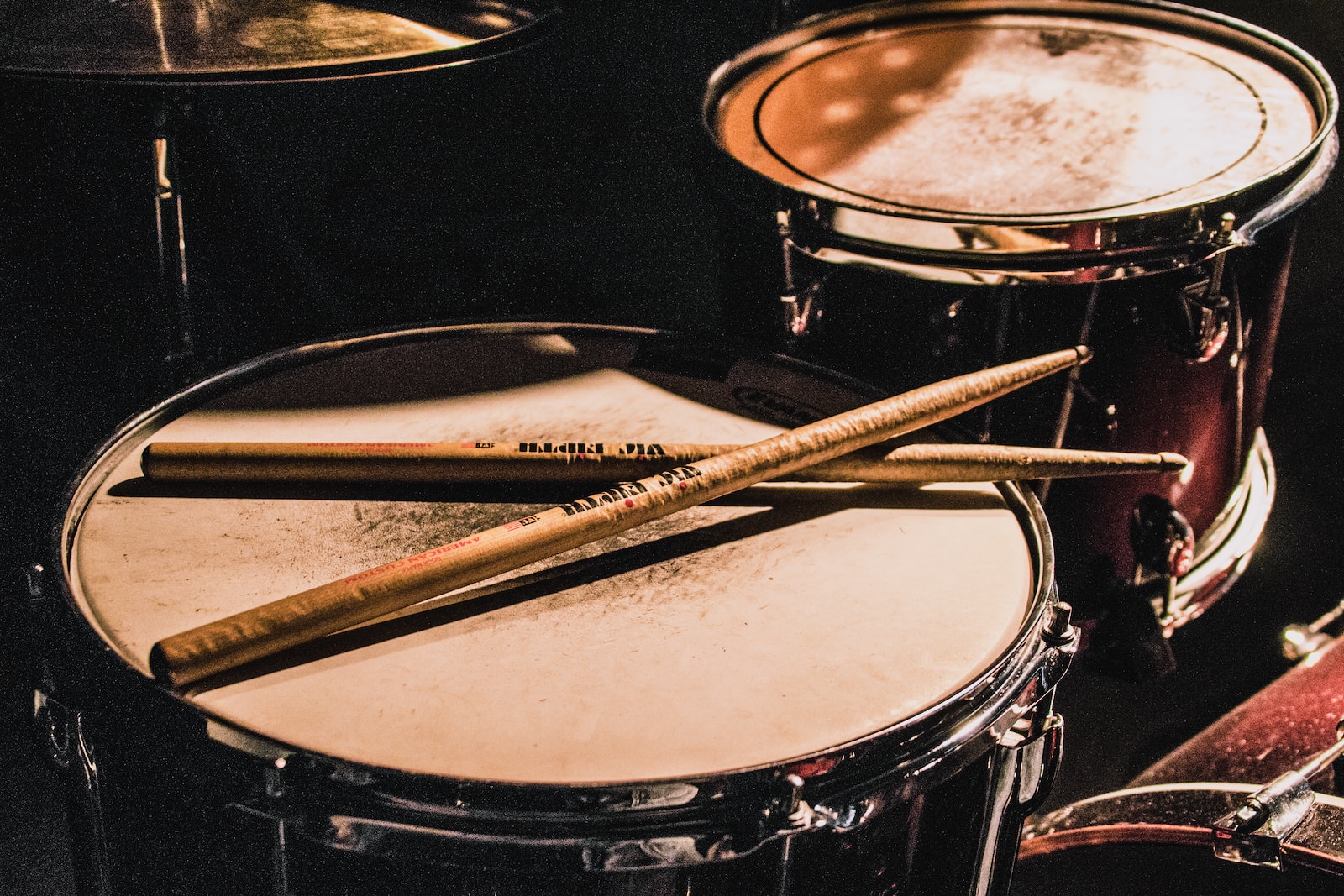
In terms of material and shapes, there are several different variations of drumsticks used in different situations. Here are a few examples:
- Standard drumsticks: These are the most common type of drumsticks and are used by drummers in a wide range of musical styles. They are typically made from wood, such as hickory or maple, and have a tapered shape with a rounded tip.
- Nylon-tipped drumsticks: These drumsticks are similar to standard drumsticks, but with a nylon tip. The nylon tip provides a brighter, more focused sound than a wooden tip and is less likely to chip or break.
- Jazz drumsticks: These drumsticks are lighter and thinner than standard drumsticks, making them well-suited for jazz drumming. They are typically made from maple or hickory and have a smaller tip for more delicate playing.
- Heavy metal drumsticks: These drumsticks are thicker and heavier than standard drumsticks, allowing drummers to play with more power and volume. They are often made from materials like oak or metal.
- Timbale sticks: These drumsticks are used for playing timbales, which are a type of Latin percussion instrument. They are typically longer and thinner than standard drumsticks and have a tapered tip for a brighter, more articulate sound.
- Hot rods: Hot rods are a type of drumstick made from bundles of thin wooden dowels. They produce a softer, more mellow sound than standard drumsticks and are often used in acoustic settings.
- Brushes: Drum brushes are a type of percussion mallet made from a bundle of wire bristles. They are used to create a softer, more subtle sound on the drum kit and are commonly used in jazz and acoustic music.

But in terms of sizes, drumsticks also come in different variations, each with its own advantages and disadvantages. Some of the most popular sizes including:
- 7A: This is the thinnest and lightest of the commonly used drumstick sizes. It is ideal for lighter playing styles, such as jazz, and for drummers who want a high degree of control and finesse. The 7A size is also suitable for beginners who are still developing their technique.
- 5A: This is the most common drumstick size and is often considered a standard. It is slightly thicker and heavier than a 7A, which makes it suitable for a wider range of playing styles, including rock, pop, and country. The 5A size provides a good balance between speed, power, and control.
- 2B: This is a larger and heavier drumstick size, suitable for heavier playing styles, such as hard rock and metal. The extra weight and thickness of the 2B size allow for greater volume and power, but can be more difficult to control than smaller sizes.
- 5B: This is a slightly larger and heavier version of the 5A size, suitable for drummers who want a little more power and projection without sacrificing too much control. The 5B size is suitable for a wide range of musical genres, including rock, pop, and metal.
- 3A: This is a slightly larger and heavier version of the 5B size, suitable for drummers who want even more power and volume. The 3A size is suitable for heavier playing styles, such as hard rock and metal, but can be more difficult to control than smaller sizes.
It is important to note that the ideal drumstick size depends on a drummer’s individual playing style and technique, as well as the type of music they play. Some drummers may prefer to use larger or smaller drumsticks depending on their personal preferences, and there is no one “right” size for everyone.










































































































